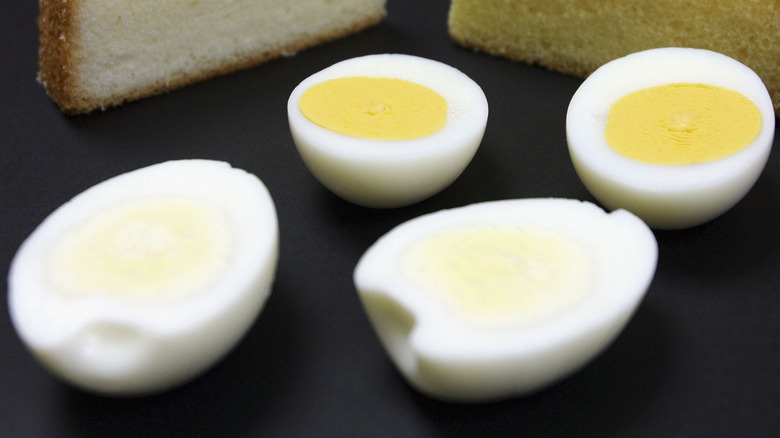White Egg Yolks Aren't A Myth – And There's No Reason To Panic
Cracking eggs is an underrated joy of life, made all the better by the satisfying sight of a golden yolk floating in a pristine pool of albumen. People take eggs seriously, recoiling at anything that looks a little unusual, like a white yolk. Yes, white egg yolks do exist.
Are white egg yolks safe to eat? The answer is a resounding yes. Unless their smell is rancid, white egg yolks are perfectly safe for consumption. They say you are what you eat; The same is true for chickens. Pale yolks are a result of the hen's diet. If the chickens are given a colorless diet that includes feed like white cornmeal and sorghum, the yolk of their eggs can turn pale or white.
However, chickens fed a pigmented diet that includes yellow corn, red bell peppers, or paprika will produce eggs with yellow or orange-tinted yolks. Eggs from free-range chicken eggs often have darker yolks because the birds feed on plant pigments called carotenoids.
The color of yolk may affect its taste
While bright yellow or orange yolks are generally preferred, the color doesn't affect the nutritional value. Still, you might have noticed that some eggs are creamier or tastier than others. Pastured chicken eggs are generally considered more flavorful factory-farmed eggs.
A golden or deep orange yolk is considered good because of its high beta-carotene levels. The color comes from pigments called xanthophylls, which are found in feed ingredients such as alfalfa meal, corn gluten meal, paprika, and marigold. Also, chickens that eat fatty foods may lay eggs that are high in fat.
No matter the color, the difference in taste is barely discernable to many. What you should be concerned about are nearly black egg yolks. Egg yolks turn black when the eggs are spoiled and rotten. Sometimes, eggs will develop a black hue due to overcooking, but a fully black raw yolk is inedible and should be discarded. Similarly, if the yolk has a pink or green hue, it should be discarded. It's better to exercise caution because eggs exhibiting these colors may be contaminated with Pseudomonas bacteria.

